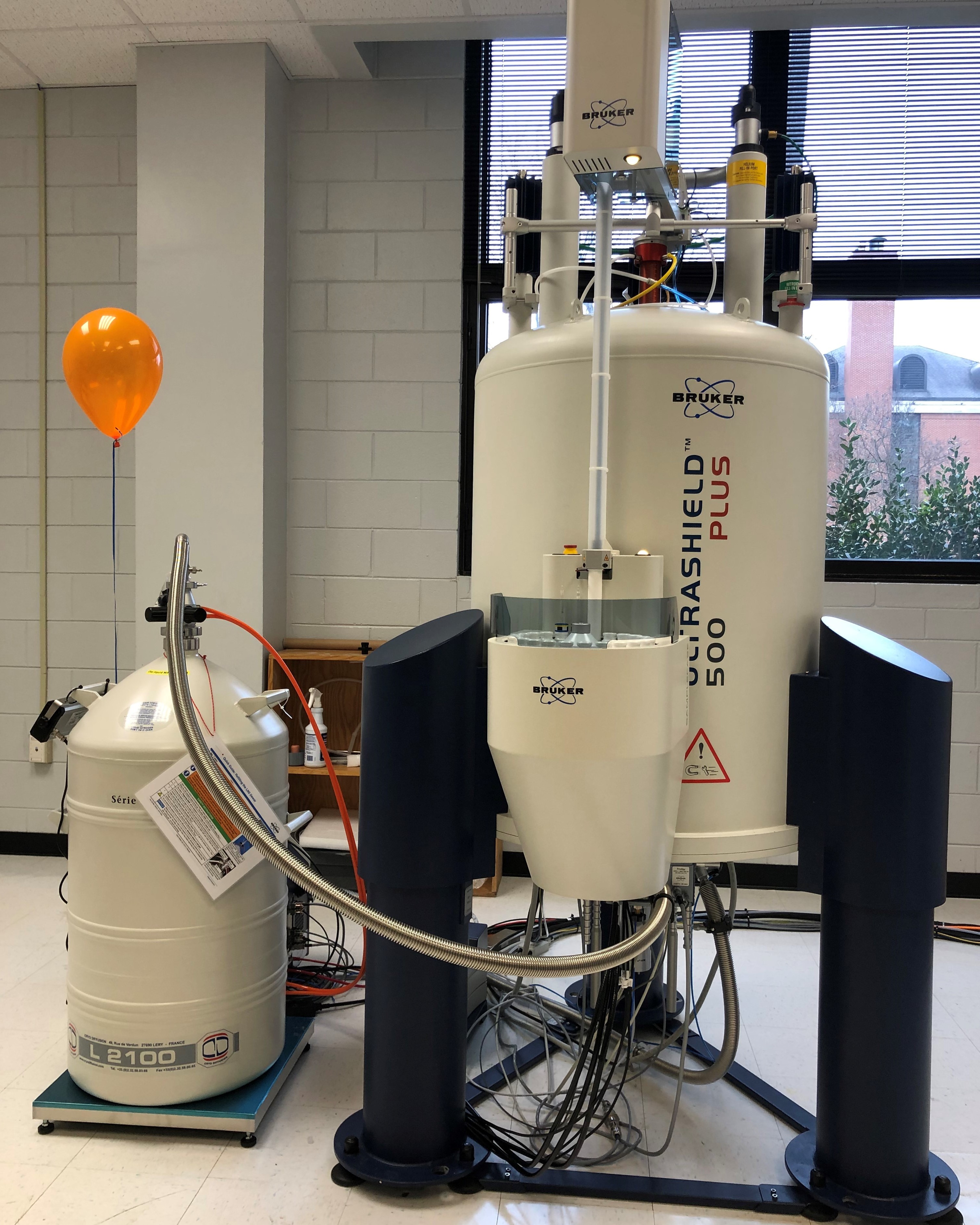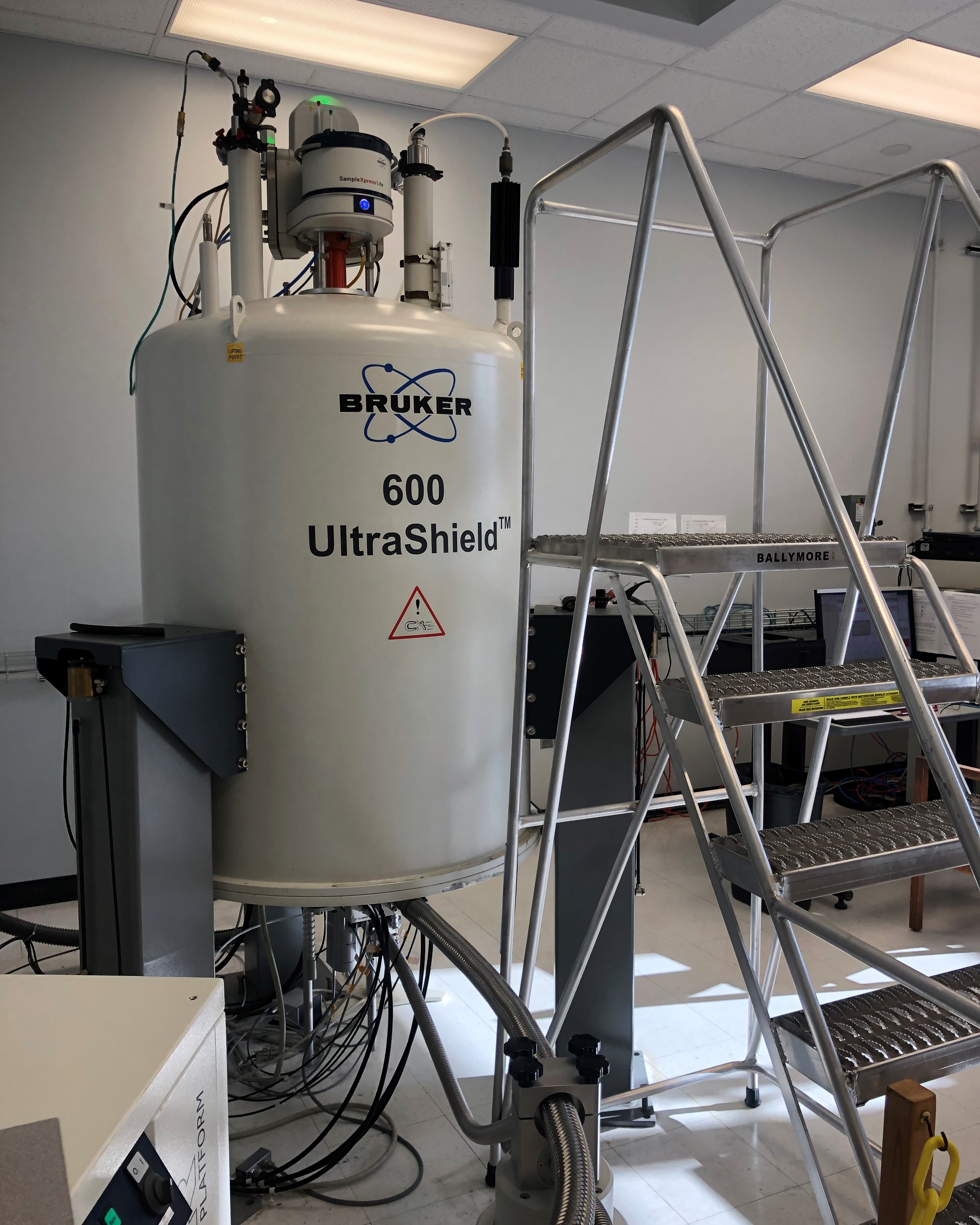Facilities
Research Instrumentation
The Department of Chemistry and Biochemistry houses three Time-of-Flight mass spectrometers that are crucial to the performance of many kinds of chemical research. Users of TOF instruments and data systems can routinely receive technical support in mass spectrometry experiments that includes method development, data acquisition and result interpretation from service personnel. The GCT premier is interfaced to a gas chromatograph and is equipped with a direct inlet and a solids probe. EI and CI ionization modes are available and resulting spectra can be searched against the NIST03 compound library for structural matches. The Q-TOF premier has a full range of modern mass spectrometric techniques available, including MS, MSMS, Survey, PID neutral, PID product, MSE and DDAX scanning methods. Acquired data have high resolution and less than 5 ppm mass errors. ESI and APPI ionization at nano/anlytical flow rate are available for polar and non-polar liquid samples delivered by the Acquity UPLC system with HT autosampler. The Bruker Microflex matrix-assisted laser desorption ionization (MALDI-TOF) mass spectrometer is ideal for protein and polymer studies. The Department's mass spectrometry capability is greatly enhanced by Waters mass spectrometers that provide accurate mass measurement and that have made compositional analysis possible. Research that involves organic synthesis, ligand interaction, peptide/protein sequencing and many other areas of chemistry requires mass spectrometry tools.
Nuclear magnetic resonance spectroscopy (NMR) is an essential technique for chemical and biochemical research. Our department is equipped with two spectrometers available to students and faculty. Experts in NMR are available to help with instrument operation and spectrum interpretation. The NMR Facility houses two high-field NMR spectrometers. A 500 MHz Bruker Neo NMR spectrometer with an automated sample changer is available for samples that require the resolution and sensitivity advantages of a high-field instrumentation. 2D NMR techniques such as COSY, NOESY, indirectly detected C-H correlation experiments (HSQC, HMQC and HMBC) may be performed on this instrument, and nearly all NMR-active nuclei are observable with our broad-band liquid Nitrogen cooled cryoprobe. The NMR facility also has a Bruker 600 MHz NMR with a triple resonance cryoprobe and an automatic sample changer. This instrument is capable of acquiring triple resonance data used for the determination of the atomic resolution 3-dimensional molecular structures of biologically relevant proteins.
 |
 |
| 500 MHz NMR | 600 MHz NMR |
The department houses the University X-Ray Diffraction Facility that contains a state-of-the-art Bruker APEX single crystal X-ray diffractometer with an area detector and an Oxford cryostream low-temperature device. Using this instrument, faculty and trained graduate students are capable of performing single-crystal X-ray structural determinations. This instrument is an important tool for our inorganic and organic faculty involved in complex syntheses. The facility also houses a new Rigaku powder X-ray diffractometer.
The department houses a host of spectrophotometers including those used for fluorimetry, FT-IR, FT-Raman, and GC/FT-IR. There are many capillary gas chromatographs in the department, one of which uses an ion-trap detector. There are several HPLC’s and a preparative-scale HPLC that permits the rapid separation of multi-gram mixtures. The department has a number of UV-vis and UV-vis-NIR spectrophotometers with a diffuse reflectance attachments. We also have a new spectrophotometer for magnetic circular dichroism (MCD) measurements. Finally, electron paramagnetic resonance (EPR) experiments can be performed on the department’s new Bruker EMX spectrometer.
The department’s educational philosophy is that a well-trained chemist must be familiar with the operation of modern chemical instrumentation. Graduate students are strongly encouraged to learn to operate the equipment that they need in their research. A typical graduate student will have learned to operate several major instruments by the time the student receives an advanced degree. This “hands-on” approach applies to all instruments in the department and distinguishes Auburn University from other institutions where few graduate students are permitted access to the major instruments.
